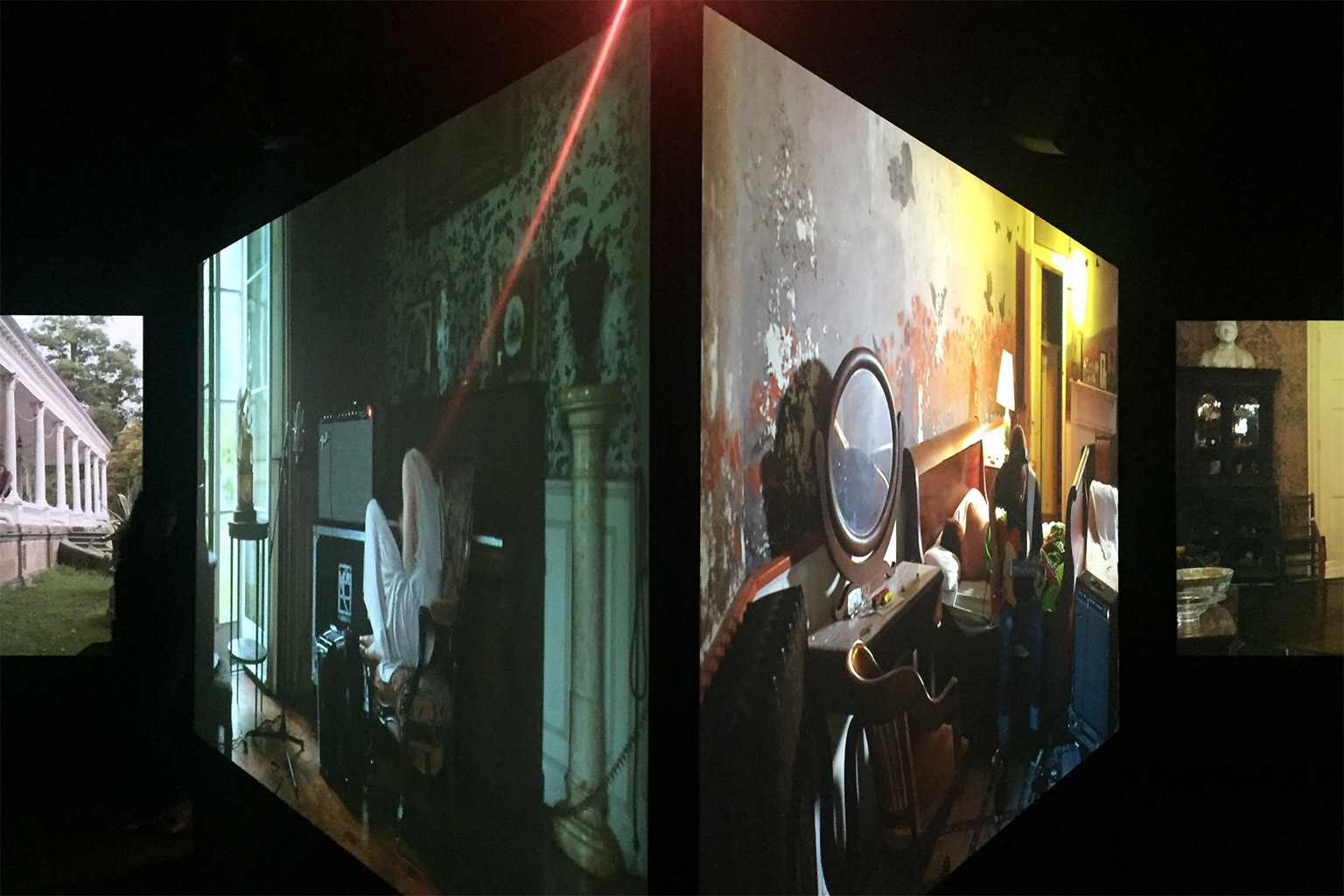March 29, 2011
A few weeks ago I was talking with my mom on the phone and outsourcing came up. Somehow. And in the usual way that most Americans think of it—”Why are all these paying jobs going to people outside of our country’s borders when our economy’s hurting and we have so many people out of work.” My mom went as far as to propose a boycott of certain companies until they bring outsourced jobs home. When I asked what would happen when everyone’s bills shot up because said companies would be paying higher wages for said jobs, the conversation sort of petered out. But it’s a commonly enough posited question and quandary. What’s not commonly talked about though is how all this outsourcing of work and, it turns out, culture is affecting the people it’s all being outsourced to. Such is the subject of a new book, Dead Ringers, written by Shehzad Nadeem, Assistant Professor of Sociology at the City University of New York. We got a chance to talk with Nadeem about his book, globalization and its effect around the world, Indian Doppelgängers, and why people should read books with charts. I know. We’re WAY out of our depth.
And, in full disclosure, Shehzad is a friend of ours and probably one of the smartest, nicest people we know. Not that that should cloud you’re judgement on anything. You should just know that he rules. And, if you’re more the
New York Magazine type, less the
New Yorker type and aren’t likely to finish this interview, you should know that Shehzad’s holding a
book release party that’s open to the public
tomorrow night at powerHouse Arena in DUMBO from
7-9PM. I bet there will totally be chart-shaped cakes. RSVP on
powerHouse’s site. And know that there likely will not be chart-shaped cakes. And that powerHouse Arena is not an actual arena….. ON TO THE INTERVIEW!
Kindness of Ravens: Okay, so, the thing that surprised me—in a good way—when I first picked up your book was that it did seem to focus on the effect this has on the culture of Indians rather than, say, a ‘They’re taking all our jobs’ kind of mentality, which is where most people’s mind go when we start talking about outsourcing. But it’s such a strange, strange phenomenon—to be affected so significantly and actively by something seemingly so trivial to most of us. What brought you to write about this? Why’d you get interested in the subject in the first place?
Shehzad Nadeem: I was interested in corporate deception. Multinational companies wanted to send white collar work abroad on a mass scale to save on labor costs, but they knew that people would be anxious and angry about it. So they found a way to shift the work in a relatively invisible manner, a way of occluding the geographic signature, “Made in India.” We’re all now familiar now with the Indian call center industry, which frequently requires employees to don Western identities in providing customer service. Workers also undergo training in Western accents and popular culture and are discouraged from disclosing their location on the phone. (If pressed, many are simply told to lie.)
To employers and executives, these are white lies. To Indian workers they’re tainted gray. To Western workers they’re soot black. They’re lies that justify, complicate, and deceive. The paradox is that outsourcing is also a material truth, a series of concrete, mimetic practices. A forged truth. In a word, a masquerade. What is it like, I ask, to act like Americans and Europeans and live as if you’re in time zones a world apart?
 Which relates to the title. The term “dead ringer” refers to one who strongly resembles another. In its original meaning, a ringer is a fast horse that’s furtively entered into a competition in place of a slow or injured one. Here workers in the global south are substituted for their more expensive counterparts in developed countries. To all outward appearances, the names and neutered accents, the workplace cultures and structures, the identities and lifestyles resemble those of their country of origin. Upon closer inspection, however, you see how they diverge from the mold. I found this sameness and difference fascinating.
Which relates to the title. The term “dead ringer” refers to one who strongly resembles another. In its original meaning, a ringer is a fast horse that’s furtively entered into a competition in place of a slow or injured one. Here workers in the global south are substituted for their more expensive counterparts in developed countries. To all outward appearances, the names and neutered accents, the workplace cultures and structures, the identities and lifestyles resemble those of their country of origin. Upon closer inspection, however, you see how they diverge from the mold. I found this sameness and difference fascinating.
KoR: My brain just grew. No, that all makes sense, and I think, on that level, it’s something that most of us are aware of, generally. But I think most of us view this as a recent development. How long have we actually been outsourcing these sorts of jobs? Where’d the idea originally come from?
SN: In the 1990s, General Electric established a joint venture in the country and subcontracted software development and maintenance and back-office work to Indian suppliers, such as Wipro and Tata. And British Airways sent call center work. Other multinationals, such as Microsoft, Cisco, Xerox, and Honeywell, soon followed suit. A managing director at one multinational put the rationale plainly: “The country offered us cheap labor and skilled people.”
KoR: I’ll refrain from any comment on the name of that one company. So, I have to ask—What do you think of that NBC show, “Outsourced”? I’ve only seen it once, but it seemed really odd to me to make a comedy out of that kind of situation.
SN: The first time I watched the sitcom, I cringed. I cringed, in particular, because of an off-color, phallic joke: American manager to Indian employee named Manmeet: “You mean to tell me your name is Man-meat?!” But I cringed more generally because this off-putting show reminded me of the many cringe-worthy aspects of the outsourcing industry—the graveyard shifts, the long and busy work hours, the heavy-handed management, the cultural and temporal confusion. And in this, may lay the show’s brilliance—it’s as uncomfortable to watch as the industry is to observe.
KoR: Thank god. I had a vague fear you would be like, “It’s totally an intelligent and hilarious comment on the globalization of commerce and societal consequences,” or something. But have you given any thought to pirating some sort of ‘Now the Hit NBC Series, Outsourced’ sticker and slapping it on your book for extra sales? It might work, man…
SN: A very brilliant idea.
KoR: That one’s on the house. So, at one point you write that Indians employed in this sort of work are “caught in a cycle of hope and disappointment.” Can you explain that a little bit?
SN: On my first research trip to New Delhi I took a taxi down National Highway 8 to Gurgaon, an alleged former backwater and present-day outsourcing hub and “mall capital.” When crossing the flyover that connects the two cities, my gaze drifted from the craggy fields below to the billboards above, one of which featured an outsized call center worker’s comely visage, fair and framed by raven-black hair, flashing a winning smile. Welcomed by a quaint sign that read, “Thank you for visit,” we passed through a toll and armed checkpoint and entered a relatively barren stretch of road. Then, almost without warning, the new metropolis started from the dusty plain like a strutting peacock. Its plumage was fine but its calls were loud and course. The taxi driver’s teenage son stared with mouth agog at the iridescent whirl of office towers, apartment blocks, hotels, and fine restaurants. He said slowly and with wonder, “Call center-walleh idhar rahte hai.” (“The call center ones live here”). It was not Dubai, but Gurgaon had that “city of tomorrow” feel: cement trucks, proletarians, scaffolding, and cranes offset by smartly dressed professionals shopping for Western brands at malls named Ambience, Amusement, Galaxy, Marriage, Scottish, and Specialty; the hot gleam of dynamic steal and glass facades in the afternoon sun balanced by the haze and roar of traffic and construction. These were marvelous and moving sights.
But the embrace was not entirely rapturous. The high-rises were impressive, the signage luminous, and the private clubs cozy, but there were also power outages and water shortages and slum neighborhoods. (The real estate bubble has since burst, halting mall construction and depopulating office parks and luxury housing complexes, one of which famously featured a golf course and “cigar lounge.”) Misgivings about the industry that had underwritten Gurgaon’s rapid rise were muted but multiple. Talk of poor labor conditions, dead-ends, graveyard shifts, accent neutralization, and identity shifting gave some a postcolonial pause. The same news media that had so loudly sung the industry’s praises began expressing concern. “Stressed Techies Losing Sex Drive,” read one headline. “Stressed Youth Turning to Acupressure,” warned another. We came to know that call center work “turn brains into soup” and people with “high ambitions either leave call centres for something better or get fired.” Still, outsourcing was creating jobs. And thus the animating paradox of workers’ condition: They’re reaping the benefits of the corporate search for cut-rate labor but also bearing the burdens.
KoR: How did you go about doing the legwork for this? Was it largely source material research or was there a lot of personal interviewing?
 SN: The book’s based on ethnographic observation and over a hundred interviews with workers, managers, executives, trade unionists and industry reps. Naturally, companies had nothing to gain by talking to a slight, notebook-clutching researcher and so it was very difficult to get access to workplaces. But once I was able to get in—and it did take some doing—people gave of their time freely, and for that I’m infinitely grateful. All told, it took about five years to research, write, rewrite, edit, and copyedit the book. That includes the fieldwork in India – primarily in Bombay, Chennai, and Delhi—as well as New York and L.A. It was tiring but I’m happy with the end product.
SN: The book’s based on ethnographic observation and over a hundred interviews with workers, managers, executives, trade unionists and industry reps. Naturally, companies had nothing to gain by talking to a slight, notebook-clutching researcher and so it was very difficult to get access to workplaces. But once I was able to get in—and it did take some doing—people gave of their time freely, and for that I’m infinitely grateful. All told, it took about five years to research, write, rewrite, edit, and copyedit the book. That includes the fieldwork in India – primarily in Bombay, Chennai, and Delhi—as well as New York and L.A. It was tiring but I’m happy with the end product.
KoR: How did most people react then to you wanting to talk with them about this kind of subject matter? I could see there being a defensiveness or a reluctance to realistically look at what was going on, were I them.
SN: They’re very guarded. And this sensitivity pervades workplaces. For example, when I went to one company in northern Bombay six sheepish young people were seated quietly on cramped leather couches in the lobby busily filling out job applications. Insecure security guards at the front desk checked bags for hammers, screwdrivers, cameras, recorders, and computer hardware—anything that could be used to smash, record, or steal. Passage into individual offices was restricted as the company has confidentiality agreements with its clients, such that visitors should not be allowed to espy a client’s name on letterhead or computer screen. It’s as if their work is somehow illicit; that, if found out, the game would be up.
That said, many executives often thought I was an MBA student and that, ideologically, I was like-minded. And so when people opened, they said some surprising things. The COO of one company confided only half-jokingly that he thinks India needs a short spell of dictatorship so it can quickly improve its infrastructure (roads, power supplies, etc.) and better compete with countries governed by authoritarian regimes like China. Democratic niceties just delay things. An IT leviathan, so to speak.
KoR: “Short spell of Dictatorship”? God. I feel like this kind of writing seems so important, obviously, bringing to light something that’s overlooked here in the west and may be willfully ignored by those who confront every day, I’m guessing, but it also strikes me as terribly sad. It’s just the too-familiar idea of the wealthy coming to a less wealthy place and offering jobs we don’t want, getting away with paying what many of us would consider deplorable or at least unfair wages, but still paying more than many of the workers there can be paid elsewhere. None of it seems at all right or easy to…fix, for lack of a better word, but what do we do? Is it just a matter of prying out facts, like this books is doing, so everyone talks about this and knows exactly what’s going on?
SN: There’s a public importance to writing, to uncovering and examining things in a sustained and careful fashion. In my case, I was looking at working lives, and how the livelihoods of people in the global north and south are inextricably connected. People often defend the outsourcing industry by saying that it pays well and that the work environments are much better than in many other Indian industries. As one executive put it, “The standards are pretty low here. It’s not hard to improve on them.” And in one sense, he’s absolutely right and the industry has provided employment for many young Indians. It’s thus important not to overdramatize their plight. At times, they’re very happy. Especially so when they indulge in consumption binges at shopping malls or arrange romantic trysts at suburban night clubs or cafés.
But I don’t think that this is necessarily the right standard to apply. Rather I think you also need to look at the labor conditions under which outsourced work is performed in India and see how they compare with those in the US and UK, where the work originated. Not surprisingly, they’re worse. So employees are paid relatively well but the conditions of work can be strict—hours, by turns stress-filled and Chekhovian, monitored tightly. And as a result, offices are branded “electronic sweatshops” and workers, “cyber coolies.”
KoR: All this aside, in a sense, what do you like about India? We’ve heard wonderful things, but neither of us has ever been immersed in a non-Western culture, so it all seems so intimidating to us.
SN: Gertrude Stein once said that the trouble with Oakland is that “there isn’t any there there.” In India, there’s almost too much there. On one hand, there’s the resplendent poverty and suffering of India, its sad materiality. On the other, the cultural riches it possesses are mind-boggling. Its cities and towns are so varied and its people so charming. During my field research, not a single day went by in which I didn’t laugh heartily, even when I was sick.
KoR: Alright, I’m going to test your Inner PR Guru—Tell me why I, a relatively average reading American who—while I haven’t and won’t read any of the Twilight books—reads one non-fiction book for every, say, 15 works of fiction, tell me why I should read your book. I mean, there are charts in it, man. Charts!
SN: Well, I think the distinction between fiction and nonfiction is overdrawn. Fiction writers draw on facts and they find ways to creatively dramatize them, while nonfiction writers have to develop an imaginative sympathy with their subject. Take Kafka for example. He worked as an insurance clerk by day and wrote by night. His job was at times dreadfully boring, but he used it as an entry-point into the absurd. As he wrote, “The office is not a stupid institution; it belongs more to the realm of the fantastical than the stupid.” Hence the Byzantine bureaucracies in his work, the meaningless meanderings of his characters. Without the nonfiction of his daily life, there would be no fictional metamorphosis.
KoR: Way to give a super-smart answer to my mundane question, Nadeem. Professored again!
As mentioned above,
Dead Ringer‘s Book Release Party is being held tomorrow night in DUMBO,
details and RSVP information here. And if you can’t make that, you can pick up his book via the
Princeton site, or, if you’re more the
Amazon type, there too. Or, better still, walk over to your
local bookstore and ask them to order a copy if they don’t have it on their shelves. The clerk will think you’re super-smart.
Photo of the author by Erum Nadeem.

















































